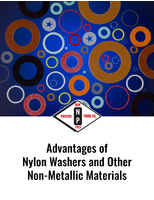Graphene comes in hazard-free, water-dispersible form.
Share:
Press Release Summary:
Offering commercial, logistical, and safety benefits, graphene offered in solution using water and isopropanol (IPA) facilitates integration within next generation engineering designs. Stability is promoted when in solution with water, and any risk of doping occurring is eliminated. Graphene supplied in this manner retains stability at higher concentrations over extended periods without being compromised in any way. No surfactants are added which can adversely affect properties of GNPs.
Original Press Release:
Graphene Pioneer 2-DTech Now Offers Graphene in Hazard-Free Water Dispersible Form
Helping industry unlock graphene’s potential, 2-DTech, a spin out from the University of Manchester, has perfected a technique which means it is now able to offer its graphene products in a solution using water and isopropanol (IPA). This will have numerous commercial, logistical and safety advantages, thereby making the integration of graphene into next generation engineering designs much easier to accomplish.
Carbon nanomaterials, such as graphene nanoplatelets (GNPs), are often supplied as a liquid rather than a powder. Normally they will be suspended in organic solvents such as dimethylformamide (DMF) and N-methyl-2-pyrrolidone. Unfortunately these solvents have several drawbacks. DMF’s chemical composition, for example, implies serious health concerns for workers involved in its handling (with links to cancer and birth defects). In addition, it needs dangerous goods shipping certification, which adds to the expense and creates complications when it has to be transported. Furthermore, there are application issues to consider, as it cannot be used in conjunction with some types of plastics.
IPA presents a more attractive alternative, as it does not have any of the previously mentioned drawbacks associated with DMF. When in solution with water it offers good stability for the graphene suspended within it. Any risk of doping occurring is eliminated - thus assuring the quality of the graphene is maintained. Graphene supplied in this manner will stay stable at much higher concentrations over considerably long periods of time without being in anyway compromised.
“Our IPA-based offering can support ten times the concentration of graphene that is possible to achieve with the DMF solutions and it will remain stable in this form long term. We are unique in that we don’t add surfactants which can adversely affect the properties of the GNPs,” explains Dr Margherita Sepioni, Research and Technology Officer at 2-DTech.
“The potential of graphene to revolutionise sensor technology, battery design and touch screen deployment, as well as furnishing industry with a variety of exciting new composites, is now starting to be widely recognised. As these opportunities begin to open up, medium to large scale utilisation of this material will be dependent on having a convenient and operationally effective method by which it can be conveyed,” states Nigel Salter, 2-DTech’s Managing Director. “To be able to deliver graphene in a stable and totally benign media is something that will distinguish us from rival suppliers and is certain to be of huge benefit to our customers.”
For more information go to: http://2-dtech.com



